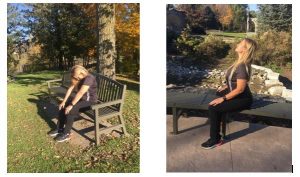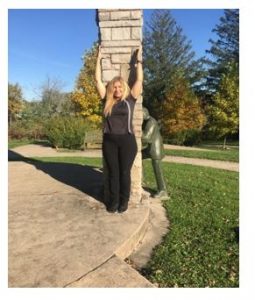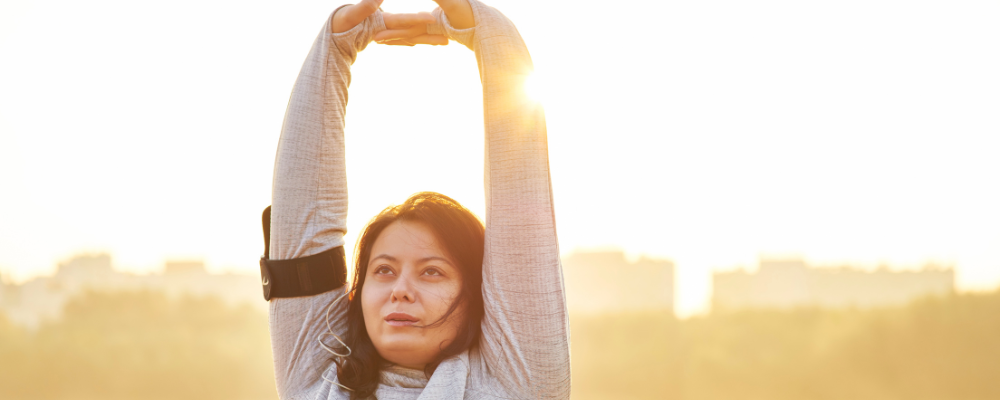The Benefits of Spinal Mobilization
Have you ever noticed a cranky feeling in your low back when you roll out of bed? Your first inclination may be to stretch. Common stretches such as toe touches or pulling your knees to your chest may feel great at the time but it is a short term fix that might end up doing more harm than good by triggering a stretch reflex. This is a neurological phenomenon that provides the sensation of temporary pain relief. The problem is that after ten to fifteen minutes, it is common for the pain to return, and is often worse than before.
Most forms of spine pain come from spinal compression. Your spine is made up of 24 small bones, known as vertebrae that are stacked on top of each other to create the spinal column. Between each vertebra is a soft, gel-like cushion called a disc that helps absorb shock and prevent bones from rubbing together. The gel inside the disc consists of 65 to 86 percent water depending on the time of day. Think of the discs like sponges between the vertebrae. During the day gravity compresses our spine, pressing down on the discs and water slowly leaks out. When we lie down at night the spine can decompress, allowing discs to absorb water again. The average person is about a half inch taller in the morning because of this absorption. If your back feels stiff in the morning it is often because the discs are super saturated like an overfilled water balloon. For this reason, try to avoid heavy lifting in the morning when discs are vulnerable. Whenever possible wait for at least an hour to allow time for the discs to relax.
A better option than stretching the spine in the morning is to perform gentle spinal mobilization exercises. One of your best options is the cat/cow exercise. You may have seen this exercise if you’ve attended a yoga or Pilates class. Traditionally, this movement is performed on hands and knees on a mat. The cat/cow exercise can however be modified so it can be performed seated at your desk or in a chair. Hands can be placed on your knees or on the table or desk in front of you. The movement is gentle flexion and extension of the spine. Flexion is rounding the back like an angry cat and extension is arching the back which is the cow phase of the movement. The cow movement can put a lot of strain on your lower or mid back if it isn’t performed correctly. Instead of focusing on arching the low back, which can be painful, try focusing on lifting the sternum and looking up towards the ceiling with your gaze. This will help engage your mid and upper back muscles, while protecting the lower back.
Ribs are heavy, they don’t move easily. For this reason, we tend to over flex our vulnerable lower back and neck, while staying stiff through the ribcage area. For the cat phase of the exercise start by tilting the tailbone forward as you nod the head, shifting the gaze towards your navel, pressing into the ribcage. For women, think of
pressing into the area of your bra strap. Slowly move back and forth with a gentle tilt of the tailbone. Each cycle should take about three to four seconds. Always stay within a pain free range of motion. Repeat this exercise for eight cycles to help reduce spinal tension. (see photos below)
Another benefit of spinal mobilization exercise is to improve mental clarity by stimulating cerebrospinal fluid (CSF) flow. CFS is fluid that surrounds and protects our brain and spinal cord as well as being critical for the removal of toxins that accumulate in the fluid around our brain. Some practitioners compare stagnant CFS to sewer waste or sludge and CSF mobilization exercises to flushing the toilet. Imagine our brain floating in sewer water, yuck! CSF flow has two main pumps. Nodding your head yes is one way to pump or improve CSF flow. We also improve flow through the lower part of the spine with tailbone or sacral movement. Furthermore, aging is associated with a 50% reduction in CSF production so as we age this type of exercise is really important for brain health.
When we are very stiff or sitting and looking down at a computer screen or reading a book for a long period of time it causes CSF flow to become stagnant. When the head is looking down it’s like having a kink in the garden hose. Blood flow which supplies oxygen to the brain is restricted due to compression of the carotid arteries. The carotid arteries are a pair of blood vessels located on both sides of your neck that deliver blood to your brain. Whenever possible, stand up, and stretch your arms overhead for ten second to extend and decompress the spine. Decompression is important to unload stress on your back and to get the kinks out. Try standing against a wall when performing this exercise to see if you can touch the wall behind with your thumbs.
Another of my favorite movements for loosening a stiff spine and increasing CSF flow is to pretend you are finger painting a huge canvas. Let your spine sway side to side, up high and down low. This is a great way to mobilize a stiff spine after standing or sitting for hours. Keeping the creative juices flowing has never been so much fun. Always remember the benefit of nodding and the next time someone asks if you want ice cream. Be certain to nod an enthusiastic yes!
Spinal Mobilization Exercises
Cat/Cow Seated: Start by nodding your head and looking down towards your knees while flexing the spine and expanding through the ribcage. Hold for a count of four then focus on tilting the tailbone and lifting your gaze towards the ceiling as you press up through the sternum. Hold for a count of four. Repeat 8x

Overhead Spinal Stretch: Stand up, stretching your arms overhead for ten second to extend and decompress the spine.

Finger Painting: The world is your canvas. Reach high and low, up and down, back and forth. It’s fun and a great way to mobilize your spine and increase CSF. I recently took a brain fit certificate and this is one of my favorite moves from the course.







